
Posted on 02/11/2011 5:57:47 AM PST by Homer_J_Simpson


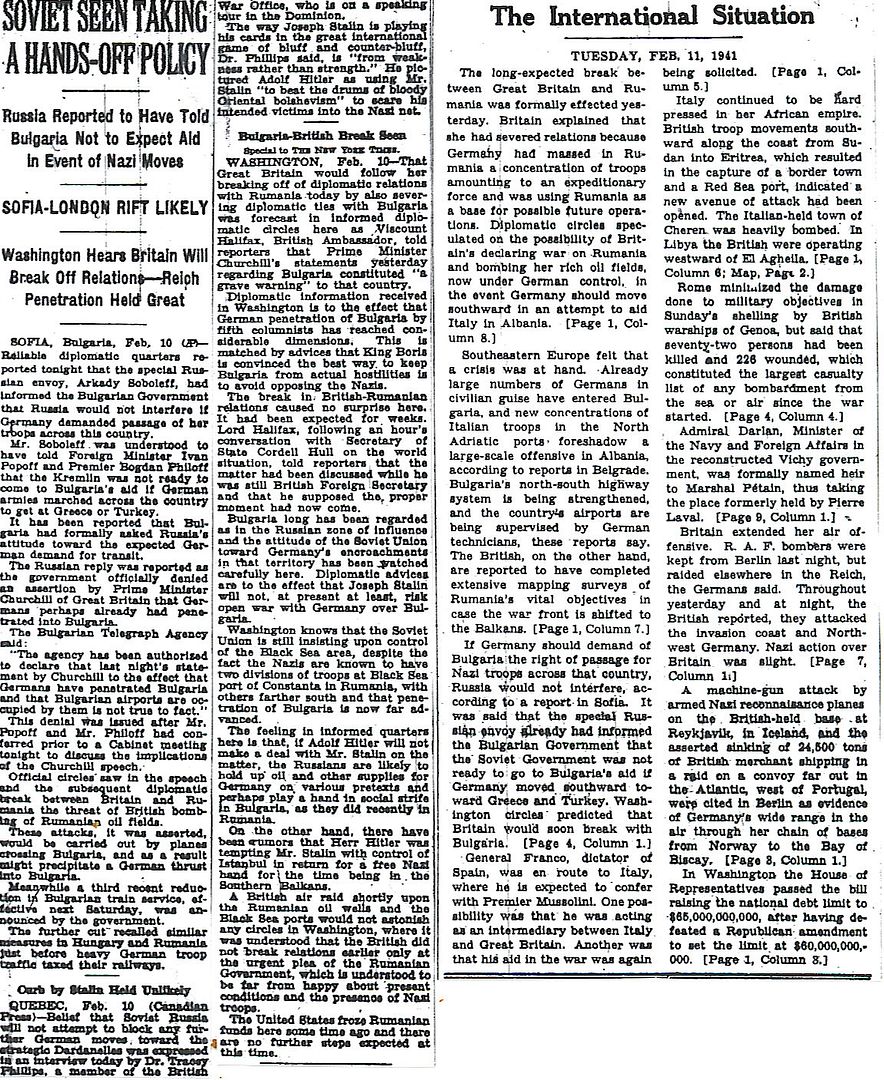
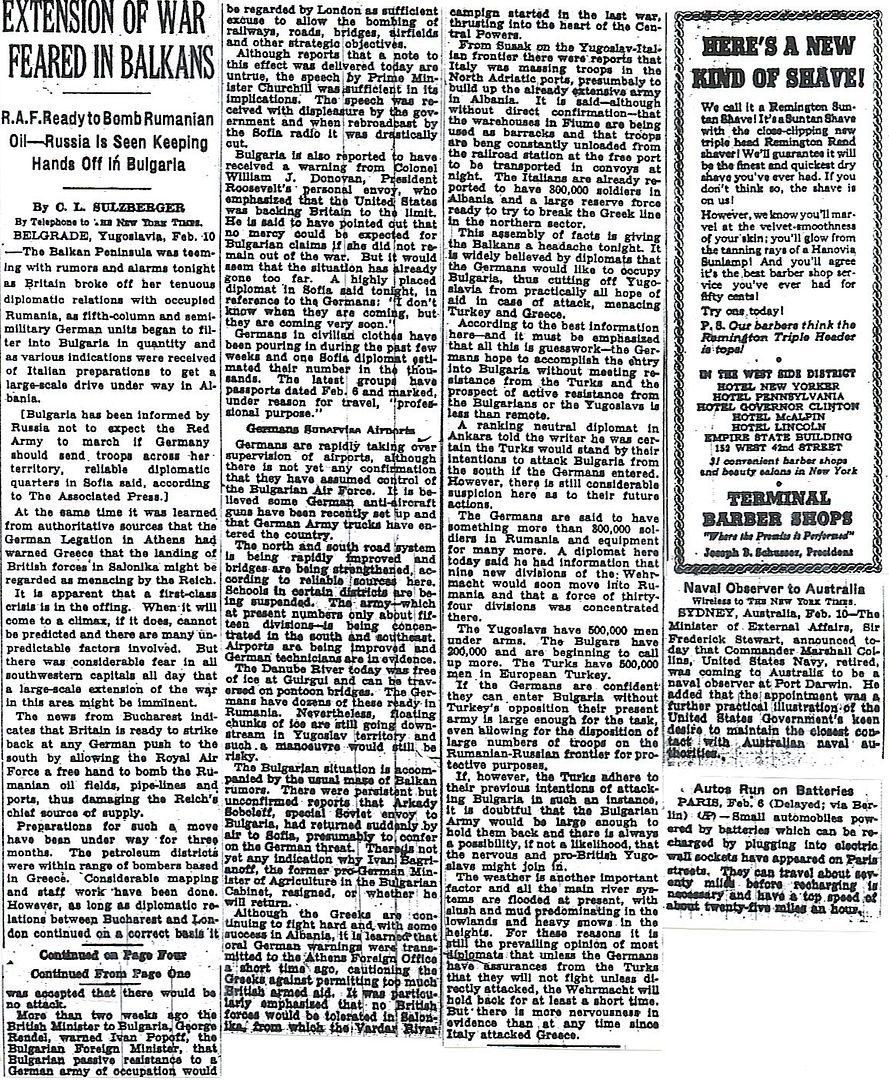
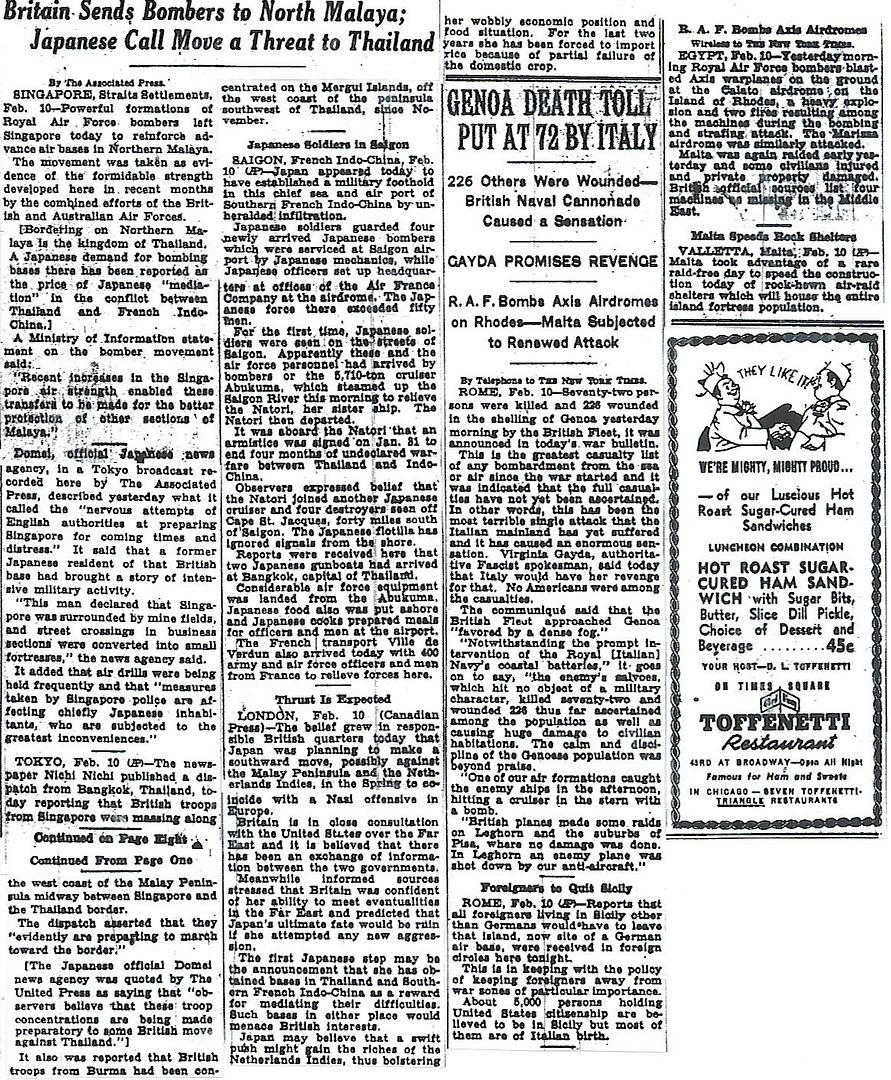
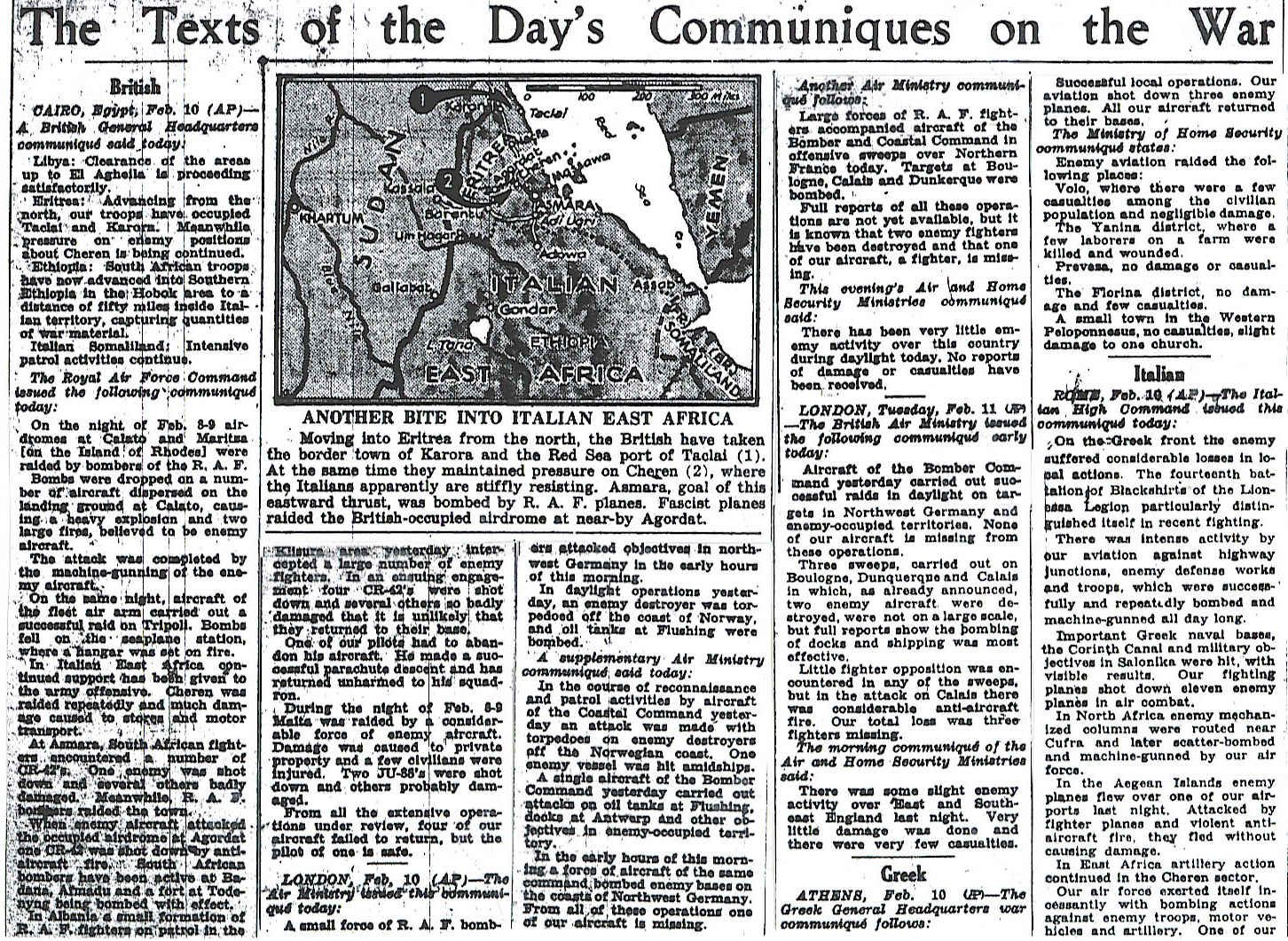

http://www.onwar.com/chrono/1941/feb41/f11feb41.htm
Darlan to be Petain’s deputy
Tuesday, February 11, 1941 www.onwar.com
In Vichy France... Darlan is nominated to be successor and deputy to Petain. He is to hold office as Foreign Minister, Minister of the Interior and Minister of Information as well as his rank as Commander in Chief of the Navy.
In East Africa... General Cunningham’s forces extend their advance from Kenya into the Italian Somaliland and take Afmadu.
http://homepage.ntlworld.com/andrew.etherington/month/thismonth/11.htm
February 11th, 1941
UNITED KINGDOM: RAF Bomber Command: The Stirling bomber made its operational debut last night when three of No. 7 Squadron’s Stirlings, led by Sqn. Ldr. Griffith-Jones, DFC, dropped 56 500lb bombs on oil-storage tanks in Rotterdam.
Prime Minister to Minister of Shipping:
Is it true that the steamship ‘New Toronto’, which arrived at Liverpool, was ordered to proceed north-about to London, and is it true that this order was only cancelled as a result of the protest of the captain, who pointed out the enormous value of his cargo, which contained, inter alia, 19,677 sub-machine guns and 2,456,000 cartridges? The arrival of these ships with large consignments of invaluable munitions ought to receive your personal attention in every case.
Submarine HMS Ultimatum launched.
Light cruiser Jacob Van Heemskerck commissioned. (Dave Shirlaw)
FRANCE: Admiral Darlan becomes Marshall Petain’s successor and Deputy in the Vichy government. Darlan is also named Foeriegn Minister, Minister of the Interior, Minister of Information, and Commander in Chief of the French Navy.
THE NETHERLANDS: The government breaks diplomatic relations with Romania.
GERMANY:
U-80 launched.
U-68 commissioned. (Dave Shirlaw)
LIBYA: Tripoli: The first troops of German 5th Light Infantry Division land.
ITALIAN SOMALILAND: South African and Gold Coast troops occupy the military centre of Afmadu.
U.S.A.: Destroyers USS Aaron Ward and Buchanan laid down. (Dave Shirlaw)
ATLANTIC OCEAN: Submarine HMS Snapper is sunk in the Atlantic Southwest of Ushant. All 39 crew are lost. It is believed that she was attacked by German minesweepers M2, M13 and M25 which were conducting an A/S sweep in the area and dropped over 50 depth charges when Snapper broke surface after firing a torpedo. (Alex Gordon)(108)
Between 0133 and 0135, U-136 fired four torpedoes at Convoy SC-67 south of Iceland and reported hits on two steamers and on a corvette and later sighted debris and two lifeboats. In fact, the Heina and HMCS Spikenard were sunk. Heina in station #72 was hit below the #2 hatch, developed a heavy list and sank vertically three hours later. All men were picked up by HMCS Dauphin and landed at Londonderry, where the injured master was taken to a hospital. The remaining survivors left for Glasgow on 14 February.
Destroyer ORP Blyskawica escorted a convoy to Iceland. But on the 14th she was again damaged in a storm and returned to Greenock. (Dave Shirlaw)
http://worldwar2daybyday.blogspot.com/
Day 530 February 11, 1941
Operation Colossus. At 0.30 AM, British paratroops of X Troop blow up the Tragino aqueduct, Southern Italy. They head West towards the coast to meet submarine HMS Triumph, but they are soon captured (remaining POWs until 1943, except Lieutenant Deane–Drummond who escapes, returns to England in 1942 and joins 1st Airborne Division). Although water supplies are temporarily interrupted, the aqueduct is quickly repaired and no harm is done to the Italian war effort or morale.
At 1 AM, British monitor HMS Erebus bombards Ostend, Belgium, for 40 minutes escorted by destroyers HMS Quorn and HMS Eglinton.
Convoy carrying the first German troops arrives at Tripoli, despite an unsuccessful attack by British submarine HMS Unique.
Another submarine HMS Snapper disappears en route from the Clyde to the Bay of Biscay (all 41 hands lost), either lost on a German minefield or depthcharged 70 miles Southwest of Brest, France, by German minesweepers M-2, M-13 and M-25.
East Africa. In the Dongolaas Gorge near Keren, Eritrea, Indian 3rd Batt/1st Punjab Regiment advances and takes the next peak, Sanchil. Italians respond with shell and mortar fire all day and a counterattack by Savoia Grenadiers. Indian troops are forced off both Sanchil and Brig’s Peak, retreating back to Cameron Ridge. Further South in Italian Somaliland, Cunningham’s forces from Kenya take the road junction at Afmadow, at the North end of the Juba River.
800 miles West of Gibraltar, German cruiser Admiral Hipper (which left Brest, France, on February 1) sinks British SS Iceland carrying 962 tons of oranges from Seville, Spain, to Britain. Hipper picks up all 23 crew who are taken prisoner. SS Iceland is a straggler from convoy HX53. Just before midnight, Hipper locates the convoy on radar at 15km and shadows it all night.
http://www.wrecksite.eu/wreck.aspx?15047
SS New Toronto
New Toronto SS was a British Cargo Steamer of 6,568 tons built in 1919 and owned by the Elder Dempster Line. On the 5th November 1942 when on route from FORCADOS & LAGOS for UK carrying a cargo of 8,000 tons including, wolfram, tin, kapok, cotton, palm oil, 3 boxes gold and 10 bags of mail she was torpedoed by German submarine U-126 and sunk. 4 persons lost from a total of 49.
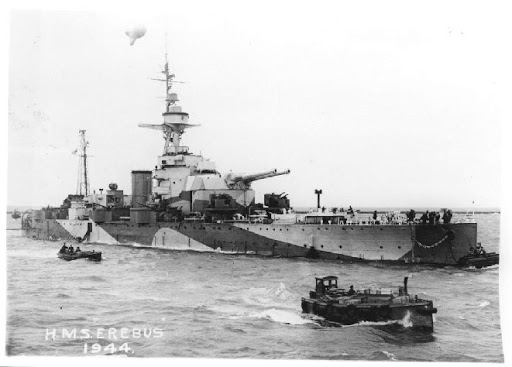
The Bellevue, located on E Street NW near the Capitol, has been renovated and is now called the George. For many years, guests would request to stay in Room 532, but I believe the building in which it was located was demolished and replaced.
The US navy should buy the plans for the Erebus/Terror and they would have a solution for their search for a littoral combat ship. Certainly looks better gunned than the two toys that they’ve bought for that purpose.
Erebus length- 405 ft. draft 11’8” guns 2x15”, 2x6”, 4x3”
Lockheed length 378’ Draft 12.8 ft, gun 57mm
GD length 419’, Draft 14.1 ft, gun 57mm.
The Erebus was wider than the Lockheed design, narrower than the GD design. The newer designs are much faster, but the older British design could be re-engined to make up some of the difference. And with adequate armor and big guns, you don’t need to be able to run away as quickly.
I’ve been fascinated with the UK “monitors” ever since I read this book nearly forty years ago.
http://www.douglasreeman.com/Douglas%20Reeman%20Novels/default%20-%20DRNovelsUKA.html
HMS Saracen - by Douglas Reeman
Something to look for at Half Price books.
Reeman’s WW2 naval fiction compares to the Hornblower “fighting sail” era books.
As a kid I read C.S. Forrester’s “The Good Shepherd” over and over. That was about a WWII destroyer on convoy duty. I’m pretty sure it was USN rather than RN. My most vivid recollection now is the steward bringing the skipper sandwiches and hot coffee on the bridge where he spent endless hours on duty. And the cold. I’ll be posting an interview with Forrester in the NYT Book Review section in a few weeks.
If you want “cold” on the bridge of a ww2 convoy warship, this one will stick.
http://en.wikipedia.org/wiki/HMS_Ulysses_%28novel%29
HMS Ulysses - Alistair MacLean
Two famous names in the British Navy. I believe it was Erebus and Terror, two British Hecla class bomb ships commanded by Sir John Franklin that disappeared in 1845 while searching for the Northwest Passage. I don't believe the ships or any of her crews were ever heard from again.
Krivitsky was naming persons who had been assassinated and said he could prove that many peculiar deaths were bona fide assassinations. He indicated that many assassins were medical personnel…which allowed for the deaths being attributed to natural causes. Krivitsky claimed that the assassins used a complete series of chemicals that produced symptoms of liver, heart, and kidney failure, and cancer, leukemia or blood cell diseases.
Krivitsky was assassinated on February 10, 1941, by a bullet to the head in the Hotel Bellevue in Washington, D.C. Krivitsky was scheduled to testify the next day before the New York legislative committee investigating the state’s educational systems.
Did they actually prove that he was assassinated? This looks like an interesting story.
In his diary, declassified in 2002, Guy Liddell, the wartime head of MI5’s B Division, admitted ‘There is no doubt that the Russians are better in the matter of espionage than any other country in the world.’ Evidence to support this came from the defection in January 1940 of Walter Krivitsky, the former head of Soviet Military Intelligence in Western Europe, who became the most significant defector yet from the elite of the Soviet intelligence services. Krivitsky gave tantalising clues pointing to a network of agents embedded deep in both the British government and the intelligence services. Though he did not know their identities, he was talking about the Cambridge Five, headed by the notorious trio of Burgess, Maclean and Philby.
Disclaimer: Opinions posted on Free Republic are those of the individual posters and do not necessarily represent the opinion of Free Republic or its management. All materials posted herein are protected by copyright law and the exemption for fair use of copyrighted works.